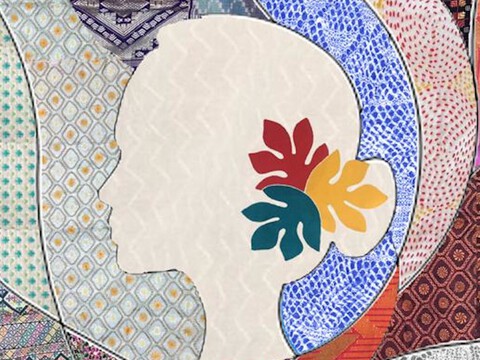Diverse Yet United: Journey of a Tapestry made by the Women Home-Based Workers of South Asia
The year 2020 was a landmark year for HomeNet South Asia. It was two decades ago, in a historic setting, in 2000, that governments from across South Asia came together with SEWA, WIEGO, UNIFEM (UN Women at present), diverse partners from civil society and research organisations to adopt the Kathmandu Declaration. The Declaration affirmed that home-based workers were also workers and advocated for the recognition of their labour rights through policy. It was at this platform, 20 years ago, that HomeNet South Asia was born.
Given the enormity of the occasion, HomeNet South Asia’s Board of Trustees, Advisory Board and its 60 affiliates unanimously agreed to mark it in a special way. The Network decided to coincide its 20th Anniversary celebrations with CSW64 that was scheduled to take place in New York in March 2020. The Commission on the Status of Women had decided to commemorate the 25th Anniversary of the Beijing Platform for Action and the Beijing Declaration. Governments and NGOs working for gender equality and gender justice from all across the globe were scheduled to be at the United Nations, in New York, during the two-week- celebrations. This, HNSA thought, was the perfect time to pursue visibility for women home-based workers of South Asia.
To mark its twentieth anniversary, HNSA decided to create a handcrafted tapestry featuring the artistry of women home-based workers from the eight nations of South Asia and I was tasked with the responsibility of designing it. The tapestry was to highlight the fact that while women home-based workers in South Asia are preservers and promoters of the region’s rich craft traditions, they remain invisible. The tapestry was to also weave in HomeNet South Asia’s continued commitment to achieving gender equality (SDG 5) and decent work (SDG 8) for millions of women home-based workers in South Asia.
It was a strategic time to showcase the work of women home-based workers to the world as some thousands of participants were expected to be in New York for CSW. Therefore, I decided to create a detailed, larger-than-life tapestry (40x48 inches). I decided to call it – Diverse Yet United to showcase the solidarity of South Asian women home-based workers. The silhouette of an invisible woman at the centre of the tapestry represents the 900,000 women home-based workers affiliated with HNSA in South Asia. It signifies her serenity and strength; while the colourful weaves and embroideries all around her, portrays her inherent skill to create such mesmerising beauty. At a glance, it comes across as a vivid depiction of the rich heritage South Asia holds making it hard to differentiate the origin of every piece. Each stitch and every weave merges with each other signifying HBW’s solidarity beyond borders, at the grassroots.
The beauty of the tapestry has been the flawless interweaving of vibrant and subtle hued swatches from South Asia draping the woman in her own creations. Each swatch is unique for its exclusive style, distinct pattern, variant size, contrast colour, and may look irregular and irrelevant on its own. Yet when intricately stitched together, the tapestry comes alive. Similar is the vision of HomeNet South Asia which is inclusive, diverse yet united.
Afghanistan’s Hazargi stitch (also called Uzbaki tanka) using bright neon threads on one side parallel to Bangladesh’s hexagonal Nakshi Kantha patterns in orange. Bhutan’s Dorji–jadam pattern using the Tring-ma stitch blends beautifully into India’s Kutchi embroidery of Gujrat, kantha patterns, zig-zag patterns of Tanka embroidery handstitched on off-white Mangalgiri cotton. Maldives’ reed mat looks strong and sturdy at the corner of the tapestry while Nepal’s hand-woven Dhaka fabric and hand-knitted allo (nettle) swirls in different hues across the tapestry. Pakistan’s gorgeous floral patterns of Phulkari embroidery stands out while Sri Lanka’s hand-cut flower adorns the hair of the invisible woman reflecting her dignity, self-respect and resilience which she showcases time and again. Last but not the least, a big wooden needle, with allo yarn as its thread, is placed on the reed mat to accentuate the fact that all these textiles were created by the invisible hands of women home-based workers of South Asia.
The swatches for the tapestry were provided to HNSA by its affiliates from:
Afghanistan: SABAH Afghanistan
Maldives:MAACS
Bangladesh: Individual HBWs
Nepal: SABAH Nepal
Bhutan: SABAH Bhutan
Pakistan: SABAH Pakistan
India: Ruaab, SADHNA, SEWA TFC
Sri Lanka: SABAH Sri Lanka
Note: Due to the COVID-19 pandemic and the subsequent cancellation of CSW64, HNSA was unable to unveil the tapestry at the event.
The article is authored by Sristi Joshi Malla, the Chairperson of SABAH Nepal – one of South Asia’s leading HBW-led producer companies - and a member of HNSA’s Advisory Board.

